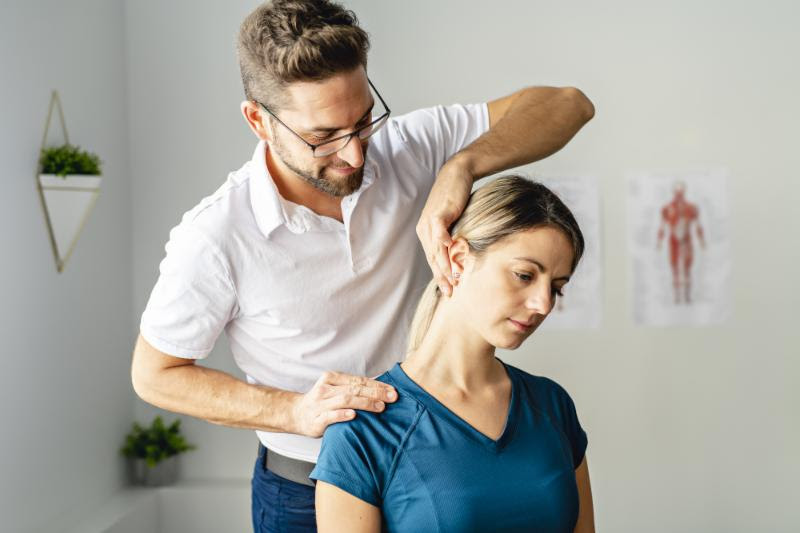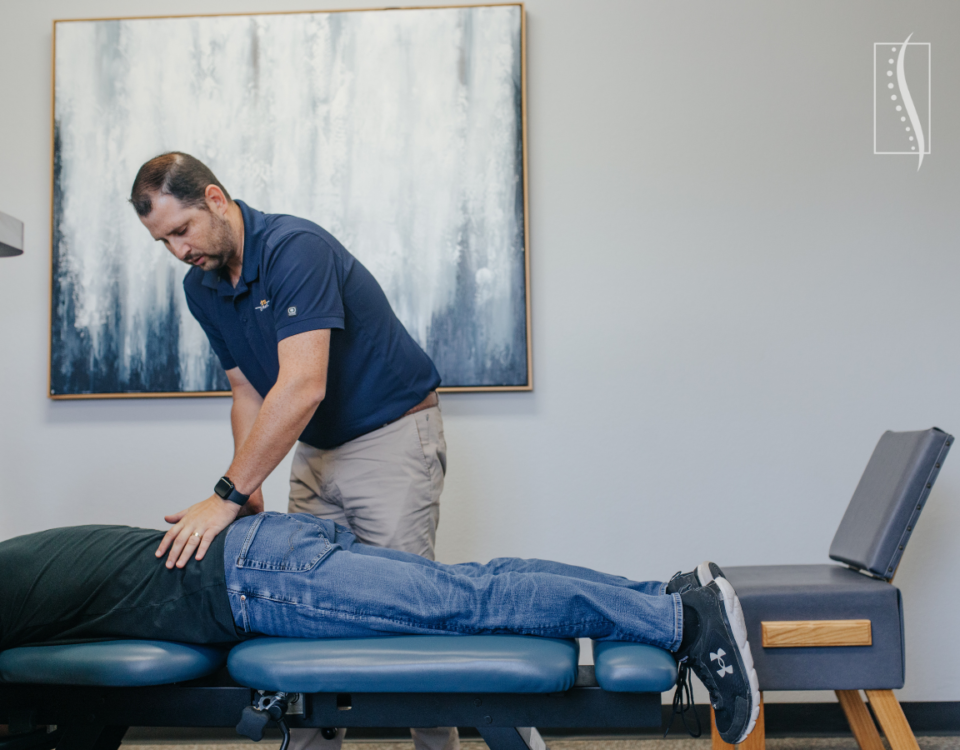
New TexStar Chiropractic Clinic Hours
April 12, 2019
Chiropractic Care To End Pain and Potentially Deadly Sleep Deprivation
June 5, 2019
Abstract
BACKGROUND:
Thoracic spine thrust manipulation has been shown to improve patient-rated outcomes for individuals with neck pain. However, there is limited evidence of its effectiveness in patients with cervical radiculopathy.
OBJECTIVES:
To compare the immediate and short-term effects of thoracic manipulation to those of a sham thoracic manipulation in patients with cervical radiculopathy.
METHODS:
In this multicenter randomized controlled trial, participants with cervical radiculopathy were randomized to receive either manipulation (n = 22) or sham manipulation (n = 21) of the thoracic spine. Outcomes were measured at baseline, immediately after treatment, and at a follow-up 48 to 72 hours after manipulation. A repeated-measures analysis of variance was used to analyze neck and upper extremity pain (numeric pain-rating scale), disability (Neck Disability Index), cervical range of motion (ROM), and endurance (deep neck flexor endurance test). The chi-square test was used to analyze changes in neck and upper extremity pain, centralization of symptoms, and beliefs about receiving the active manipulation treatment using a global rating of change scale.
RESULTS:
Neck and upper extremity pain, cervical ROM, disability, and deep neck flexor endurance all showed significant interactions between group and time (P<.01). Immediately after treatment and at the 48-to-72-hour follow-up, the manipulation group had lower neck pain (P<.01), better cervical ROM (P<.01), lower disability (P<.01), and better deep neck flexor endurance (P = .02) compared to the sham manipulation group. The manipulation group had moderate to large effect-size changes over time. No between-group differences for upper extremity pain were found immediately following the intervention (P = .34) and at 48 to 72 hours after the intervention (P = .18). At 48 to 72 hours after treatment, a greater proportion of participants in the manipulation group reported improvement (global rating of change scale score of 4 or greater) in neck and upper extremity symptoms (P<.01), centralization of symptoms (P<.01), and beliefs about receiving an active manipulation (P = .01) compared to the sham manipulation group.
CONCLUSION:
One session of thoracic manipulation resulted in improvements in pain, disability, cervical ROM, and deep neck flexor endurance in patients with cervical radiculopathy. Patients treated with manipulation were more likely to report at least moderate change in their neck and upper extremity symptoms up to 48 to 72 hours following treatment.
LEVEL OF EVIDENCE:
Therapy, level 2. J Orthop Sports Phys Ther 2019;49(5):299-309. doi:10.2519/jospt.2019.8150.
Contact TexStar Chiropractic to learn more about chiropractic spinal manipulation.



